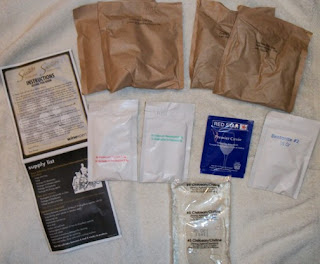This blog has come about after I proposed an experiment on the incredible Winepress.us forum. The proposal was to take three identical wine kits, make one exactly according to the instructions, then make the other two according to two other wine kit "schedules": the first proposed by Tim Vandergrift of Winexperts, and the second espoused by Jack Keller, a Texan of noted wine fame in both grapes and other fruit. Tim's schedule is 90 days until bottling, Jack's is 180.
The chosen kit is a 6 week kit: Winexpert's Selection International Australian Shiraz. All have had the yeast pitched within 2 hours of each other. The overall idea behind the experiment is to determine which time frame/method actually produces the best wine. I will have a number of personal tastings, then have an "official" tasting with about 10 people at the two year mark.
Before I continue, I must credit a few folks. This experiment could not have taken place without the generosity of Tim Vandergrift and Harvest Brewing in Edmonton, Alberta, Canada. To my utter delight, they provided the wine kits for this experiment. All the lot numbers on the packaging are within about 15 digits, so we are definitely comparing apples to apples.
The various instructions or rather "tweaks" in the case of the two extended schedules have their own differences. Tim Vandergrift's instructions deviate negligibly from the standard instructions (which, to be fair, he writes) with the exception of time frames. Jack Keller's set of instructions, however, deviates on many levels. In an effort to compare the methods as fairly as possible, I am trying to follow each list of instructions to the letter. For example, on both the "Control" (aka: kit instructions) and the "Tim" batch, I had to add bentonite to the primary. Since Jack's instructions do not call for the addition of any bentonite until Day 29, I did not add it at the time of yeast pitching. Additionally, both "Tim" and "Control" batches are fermented in a primary fermenter, whereas Jack's instructions have one ferment in a carboy with one gallon held in reserve until vigorous fermentation subsides.
A few personal notes:
- Holy oak Batman! Each kit contained 60 grams of toasted, and 60 grams of "premium" (read: untoasted) oak. I've not personally seen this much oak in a kit, but I'm interested. I like oak.
- Jack Keller's schedule is really fussy and is much more involved than standard kit instructions. His directions were 5 pages (!) long after printing. Having said that, if it makes a much better wine, I'm not complaining. Plus I've never fermented in a carboy, only a plastic "primary fermenter" so that's an immediate interest factor.
- One of my main concerns is making sure everything is degassed properly. That can affect many perceptions in wine. However, I'm also determined to play by the instructions, so I'm not using my brake bleeder in this experiment. If anyone would like to come over and help stir "vigorously", let me know.
- Another concern is to keep each wine distinguished from one another. Careful labelling of all the additives, primaries, carboys, etc, will definitely be necessary.
- I will filter each wine. As a formal tasting will take place after a suitable amount of time, I do not want appearance to be affecting the tasting panel's perception.
Control Batch instructions
Tim's Instructions in an excellent article
Jack Keller's Schedule
Here is a picture of all the inclusions for the kit:
And a picture of the three kits ready for yeast:
Now make sure the correct things happen to the correct wines on the correct days!


Great start Margot! Good luck with keeping all of the winemaking straight. I'll be watching to see how it all goes.
ReplyDeleteWelcome to the "artistry" aspect of kit wine making Margot.
ReplyDeleteEach of these methods will produce a wonderful wine.
I am fairly close to your location, and could be available to assist if needed.